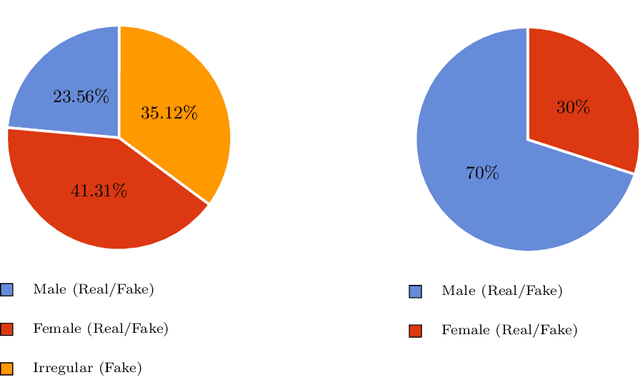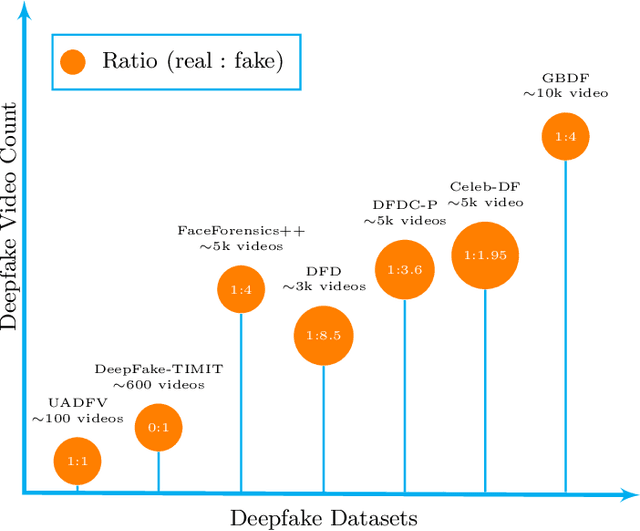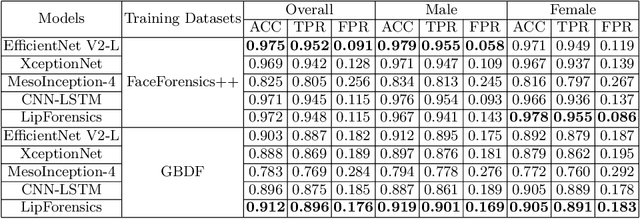GBDF: Gender Balanced DeepFake Dataset Towards Fair DeepFake Detection
Paper and Code
Jul 21, 2022



Facial forgery by deepfakes has raised severe societal concerns. Several solutions have been proposed by the vision community to effectively combat the misinformation on the internet via automated deepfake detection systems. Recent studies have demonstrated that facial analysis-based deep learning models can discriminate based on protected attributes. For the commercial adoption and massive roll-out of the deepfake detection technology, it is vital to evaluate and understand the fairness (the absence of any prejudice or favoritism) of deepfake detectors across demographic variations such as gender and race. As the performance differential of deepfake detectors between demographic subgroups would impact millions of people of the deprived sub-group. This paper aims to evaluate the fairness of the deepfake detectors across males and females. However, existing deepfake datasets are not annotated with demographic labels to facilitate fairness analysis. To this aim, we manually annotated existing popular deepfake datasets with gender labels and evaluated the performance differential of current deepfake detectors across gender. Our analysis on the gender-labeled version of the datasets suggests (a) current deepfake datasets have skewed distribution across gender, and (b) commonly adopted deepfake detectors obtain unequal performance across gender with mostly males outperforming females. Finally, we contributed a gender-balanced and annotated deepfake dataset, GBDF, to mitigate the performance differential and to promote research and development towards fairness-aware deep fake detectors. The GBDF dataset is publicly available at: https://github.com/aakash4305/GBDF
 Add to Chrome
Add to Chrome Add to Firefox
Add to Firefox Add to Edge
Add to Edge